A Journey into Korean Cuisine: 10 Must-Try Delicacies in Seoul
- berfinozelsel

- Sep 25
- 10 min read
Updated: Oct 12
🍽️ An Introduction to Korean Cuisine – What to Eat in Seoul?
Asian cuisine can be a bit challenging for us; the flavors and ingredients aren't close to our own, but don't be biased towards their dishes because of this. 😌 Before traveling to Korea, I must admit I was a bit biased towards their cuisine. Hearing about their obsession with fermented foods, plenty of spices, and kimchi, I couldn't help but wonder, "I wonder what it tastes like?" As someone who tends to be wary of raw or very spicy foods, Korean cuisine made me a little nervous. But things changed when I went there.
From the first day I set foot in Korea, I encountered an incredible variety of flavors everywhere, from street food to restaurants. It wouldn't be an exaggeration to say that every day I spent in Seoul was a taste discovery.
Kimchi was, of course, on every table, but it wasn't the only one. When I think of Korean cuisine, I think of Kimchi, Bulgogi, and Korean BBQ—those colorful, delicious street food dishes I've seen in K-dramas—or the cheese corn dogs and giant hotteoks that go viral on social media. As I wandered around Myeong-dong on my first day, I could smell different food on every corner, and every display case held unfamiliar flavors. Frankly, I wasn't sure what to try or where to begin.
In this article, I've prepared a detailed "What to Eat in Korea" guide for both those visiting Korea for the first time and those who want to learn more about Korean cuisine. From street food to restaurant fare, from soups to desserts, I'll share the must-try dishes in Korea, based on my own experiences. If you're ready, let's embark on a delicious journey into the world of Korean cuisine!
Must-Try Classics: The Basics of Korean Cuisine
🥢 Kimchi – It's Next to Everything
The soul of Korean cuisine. Fermented cabbage, but not your typical cabbage. Spicy, acidic, and potent. It might be challenging at first, but by day three, you'll be hooked. Don't be afraid to try.

🥩 Korean BBQ – Samgyeopsal Enjoyment
If you've visited Korea and haven't enjoyed a traditional barbecue, it's as if you haven't been there at all. This experience, where you grill your own meat at your table and enjoy unlimited banchan (appetizers), is unforgettable.
Kimchi, pickled vegetables, bean sprouts, soup... Seeing so much variety makes you wonder, "Do I really need to finish all of this?" Water and side dishes are complimentary. Feel free to ask for more when you're finished. If you're not good with chopsticks, forks are usually on hand. Pork is common. The menu lists it as beef (소고기 sogogi) or chicken (닭고기 dakgogi) .
📍 Where to eat?
Maple Tree House (Itaewon) – Stylish yet intimate atmosphere. The quality of the meat is undeniable.

Bulgogi (불고기) : If you're new to Korean cuisine, bulgogi is an excellent choice. The sweet-savory marinated beef has a very mild and familiar flavor. It's perfect for those who don't like spicy food—it's not spicy at all, but it's delicious. Bulgogi kimbap (sushi-like) is also available, and it's also very easy. It's thinly sliced beef marinated in a sweet-soy-based marinade. It's usually cooked with vegetables and served with rice. If you prefer a lighter, more aromatic meat dish, bulgogi is perfect for you.
Bibimbap: (비빔밥) – A colorful dish of rice, various vegetables, egg, and often a blended sauce topped with gochujang sauce. Whether served in a hot stone bowl (dolsot bibimbap) or a traditional bowl, you mix it first and then enjoy. Healthy and delicious. Rainbow Bowl : The name means "mixed rice," and that's exactly what it is: colorful vegetables, meat, rice, and egg on top. You mix it with gochujang (hot sauce) and eat it.
Dakgalbi (닭갈비) – A delicious dish with a slightly burnt flavor, served in a large pan with spicy chicken, vegetables, rice cakes, and sometimes noodles. It's cooked together at the table, and the addition of cheese towards the end elevates the dish to a whole new level.
Naengmyeon (냉면) – Cold noodle soup. Perfect for those looking to cool off in the summer heat. It's slightly sour, icy, and very refreshing.
Japchae: The Art of Clear Noodles: Made with sweet potato starch, these noodles are truly a unique experience. They're mixed with vegetables and meat, in a slightly sweet-savory sauce. The texture is unique—slippery yet chewy. Each classic dish reflects a part of Korean culture.
Mandu
Korean dumplings. You can find them boiled or fried. Every kind is delicious.
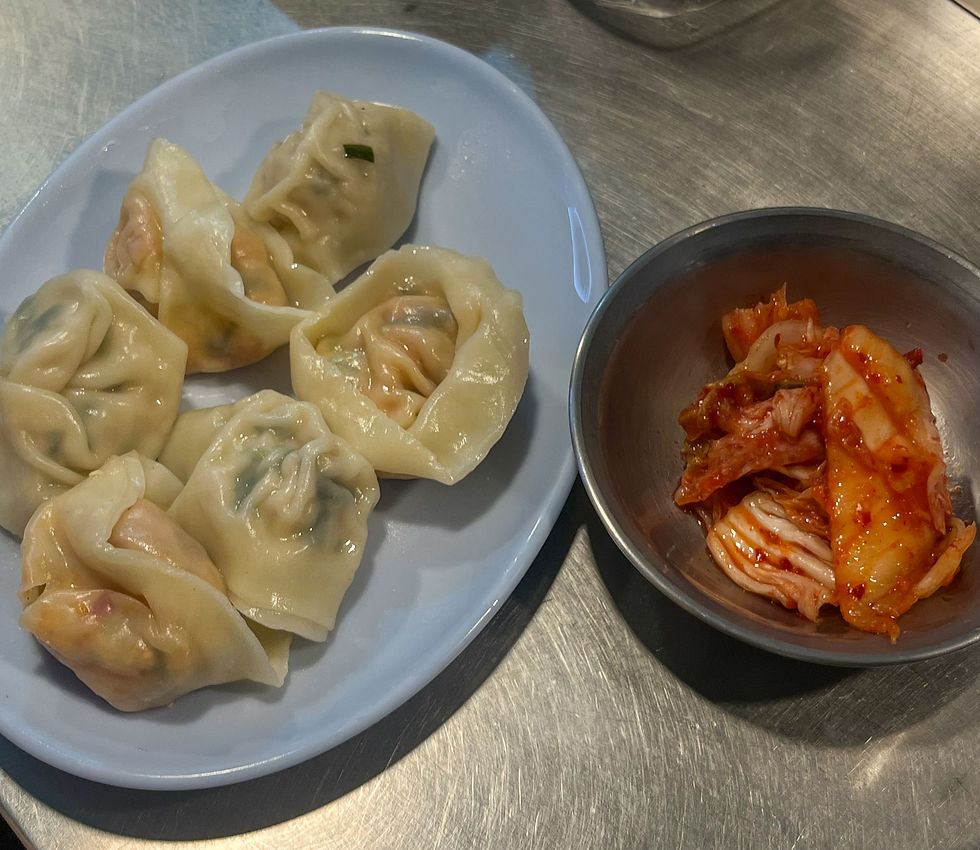
Street Food Culture: The Flavor Festival of the Streets
Street Foods of Myeong-dong and Hongdae
The street food experience in Korea is truly unique. Food stands line the side streets of Myeong-dong's main street, with a different smell and flavor on every corner.
The first thing that stands out: everything is so clean and organized! The displays are spotless, the salespeople wear gloves and masks, and the prices are clearly marked. I will rate everything I've tried out of 10 (a rating based entirely on my own taste 😁).
🌶️ Tteokbokki (떡볶이) – For Those Who Love Pain!
The star of street food. Rice cakes cooked in spicy gochujang (hot pepper paste) sauce. While the texture might seem strange at first, they're addictively delicious. Eating them hot, especially in cold weather, is a distinct pleasure. Rice cakes prepared with spicy sauce. Eat them on the street, on the go, and a cold drink is a must.

Bungeoppang: Fish-shaped pancake-like, usually filled with red bean paste, incredibly delicious, a reason for me to go to Korea and Japan. I could eat three if I could find them. 😋🤤 10/10

Gyeranppang (계란빵) – A whole egg inside a soft cake. One of the most convenient ways to grab it for breakfast on the street. 3/10
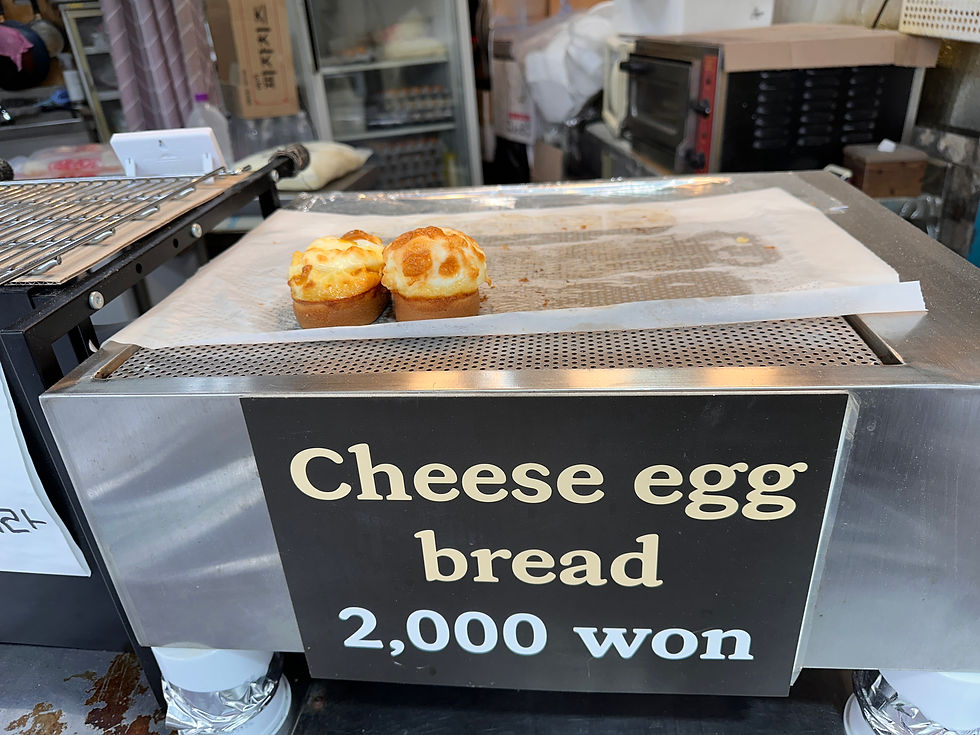
Kimbap (김밥) – While it's often thought of as "Korean sushi," it's actually quite different. Rice rolls wrapped in seaweed filled with vegetables, egg, and sometimes meat or tuna. Light, portable, and very inexpensive. 7/10
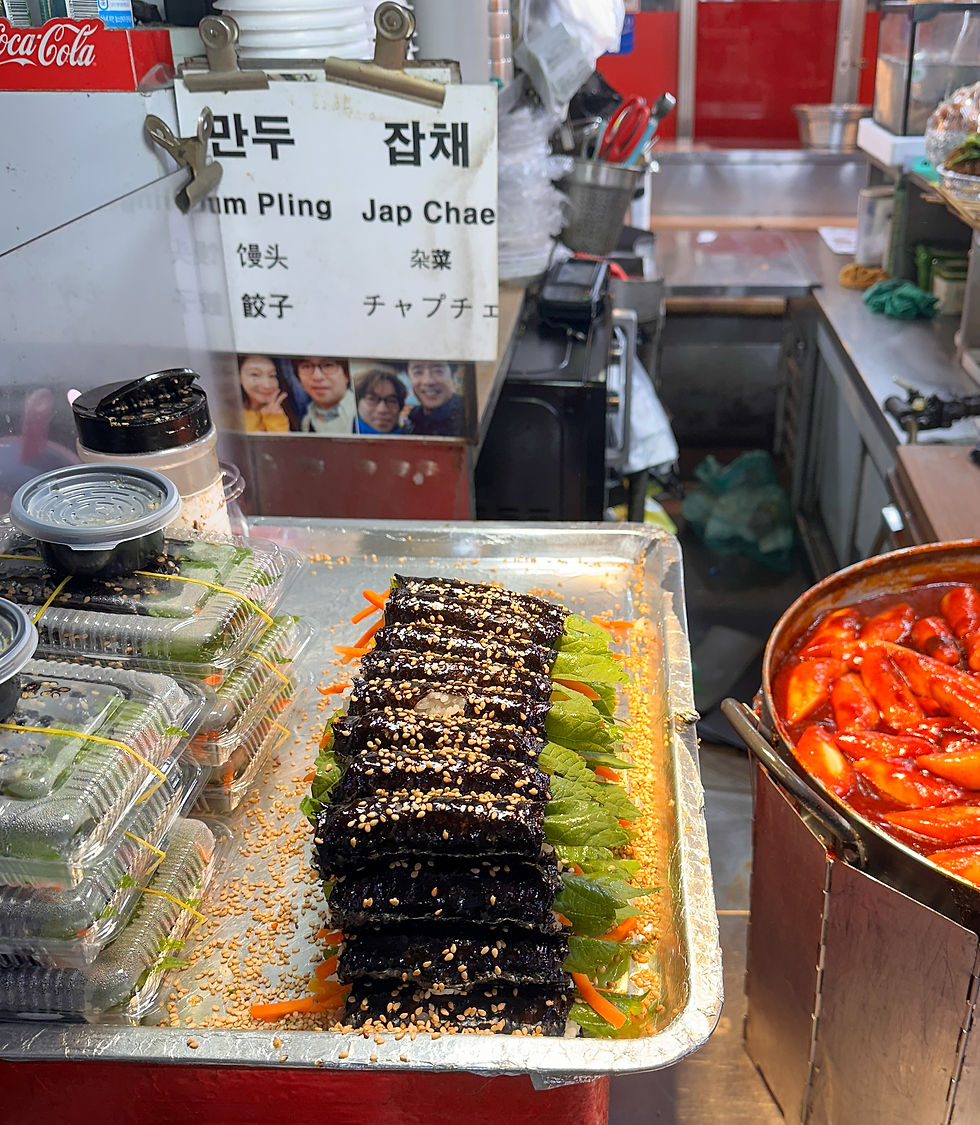
Eomuk (어묵) / Odeng – Fish cake served on a stick in a hot broth. I didn't like it, but I respect those who do. -5/10
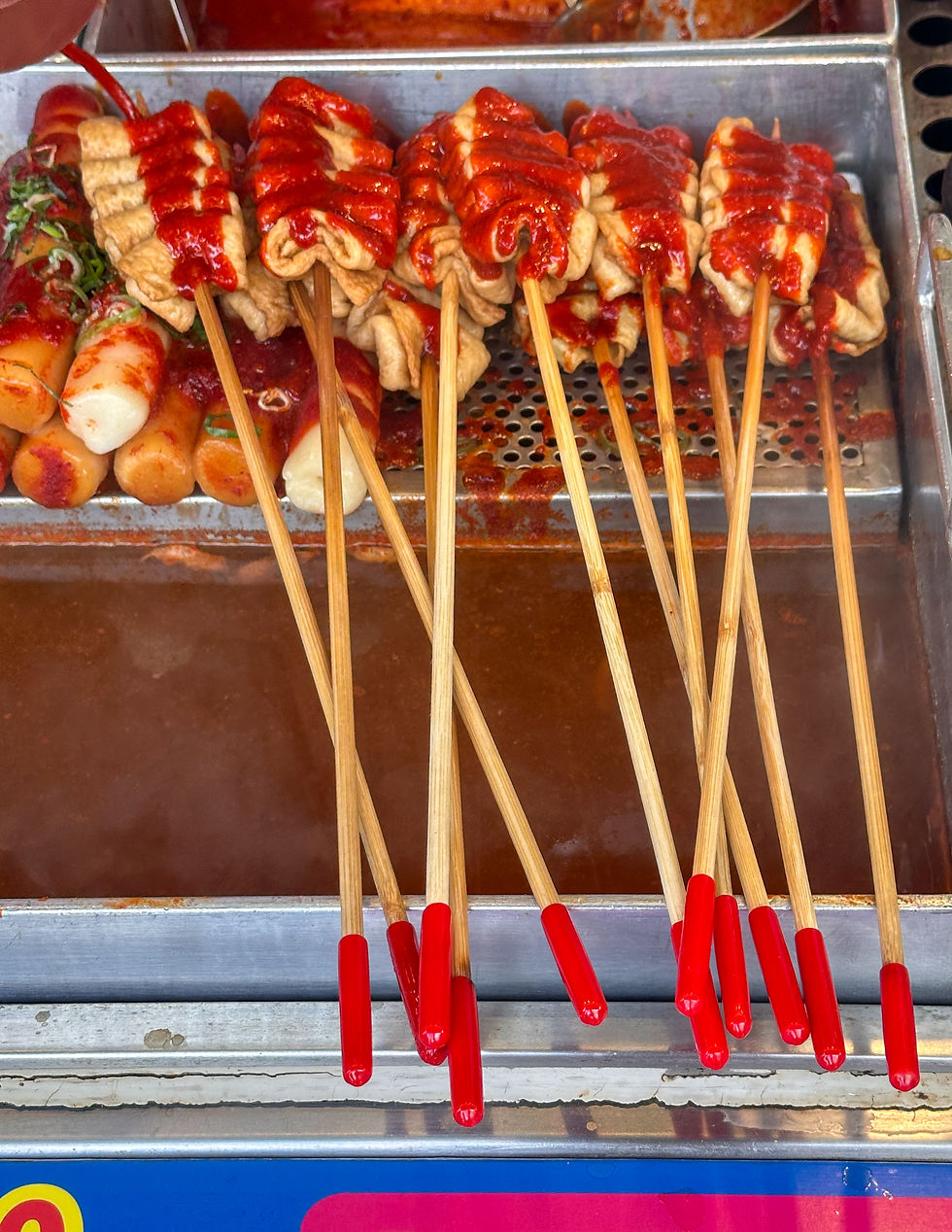
Sundae (순대)
It's a type of stuffing made with pork intestines , filled with rice, vermicelli (dangmyeon – glass noodles made from sweet potato starch), and sometimes pork blood . However, the ingredients can vary depending on the region and vendor. Some versions may also include vegetables, barley, spices, tofu, or chunks of meat . For those who don't eat pork, fish or vegetable-only versions are also available.

Bindaetteok Mung Bean Pancake
Mung bean crepe/pancake ;
The beans are first soaked in water and then ground into a thick paste. Chopped vegetables (leeks, onions), pickled cabbage (kimchi) , bean sprouts , ground meat or diced pork , and sometimes seafood are added to the paste. The mixture is fried in oil like a crepe/pancake. 4/10
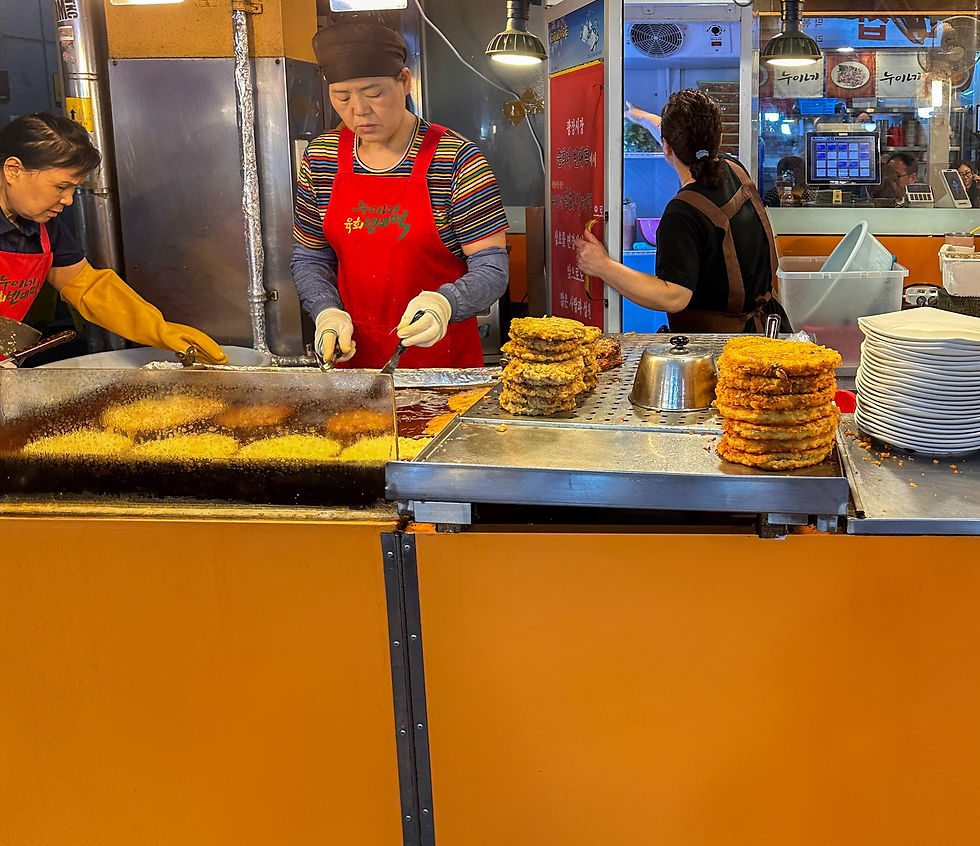
Tanghulu
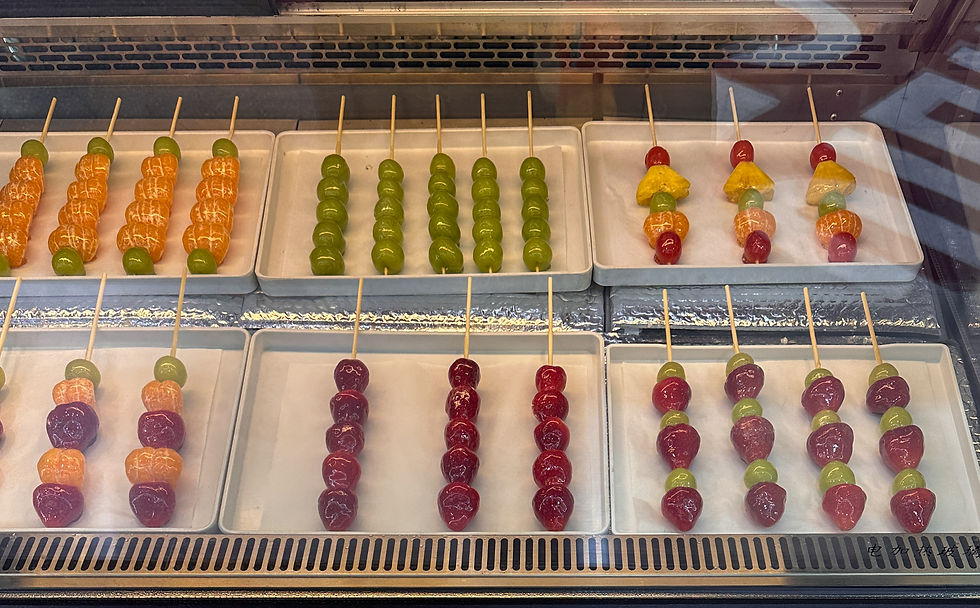
Eating while walking is not common, people usually stop in front of the shop and eat.
Make sure to throw your garbage in the right place.
It may be preferable for sellers to pay in cash; some also accept cards.
Street food is one of the most enjoyable ways to experience the spirit of Korea. Everything you eat offers not only flavor but also a story. So don't hesitate to approach the stall, point, and try something. You won't regret it!
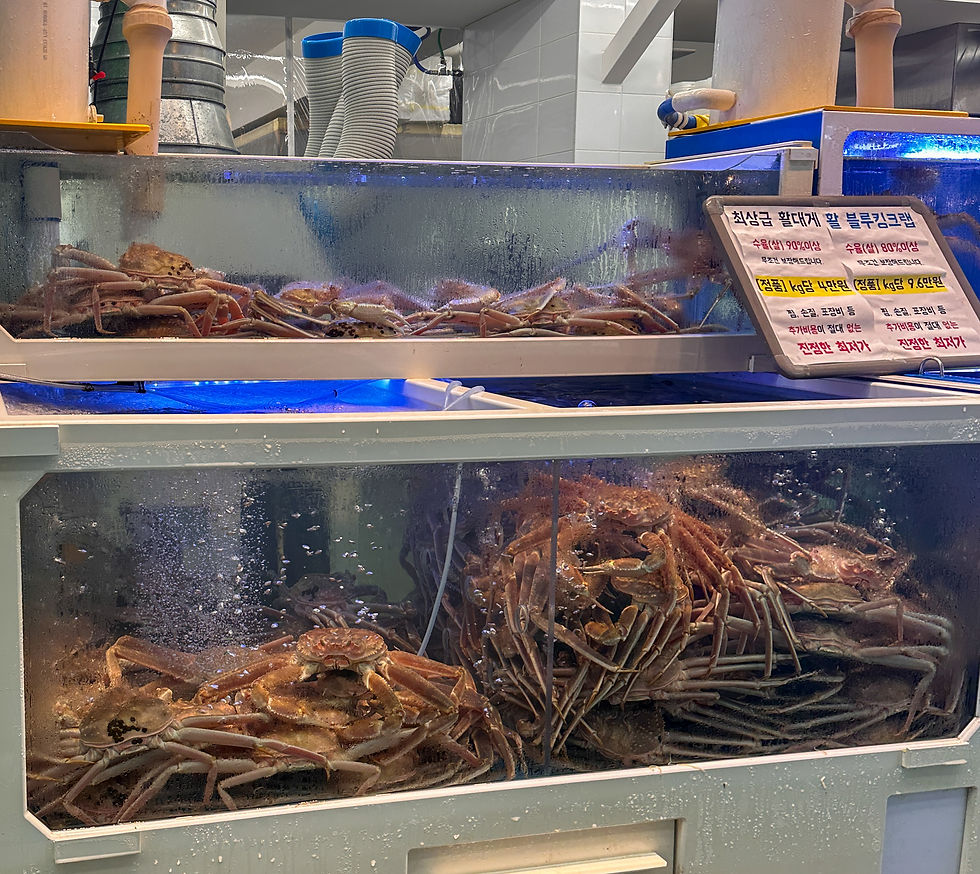
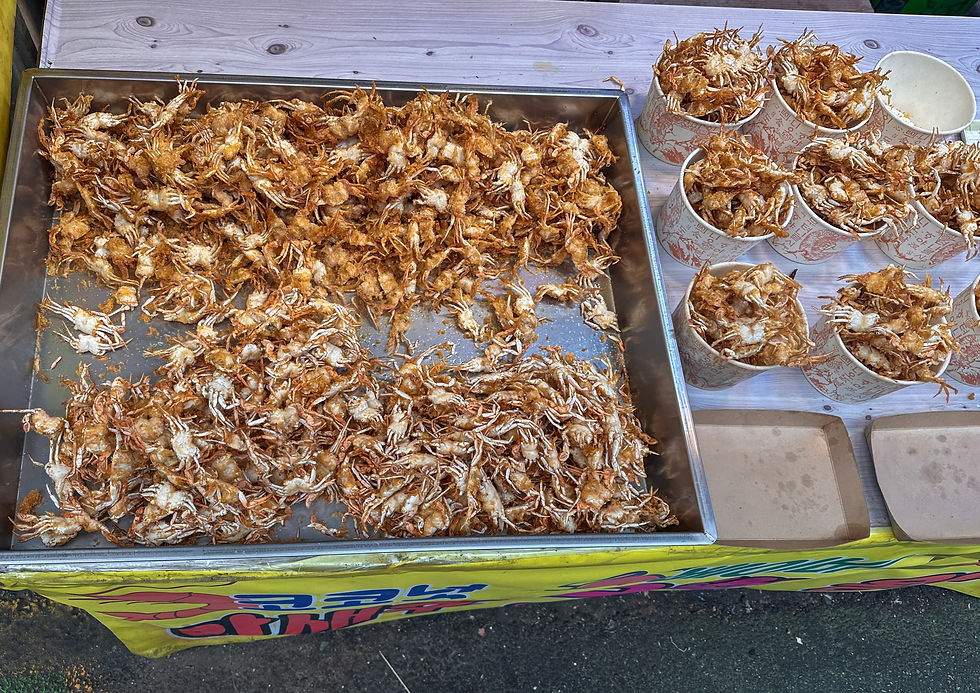


🍧 Sweet Cravings? Patbingsu!
Bingsu (빙수) – A Korean summer staple! Made with grated ice topped with ingredients like red bean paste, fruit, ice cream, or green tea powder. While patbingsu (bean-based) is the most popular, there are also variations like mango, matcha, and oreo. The most enjoyable dessert to share! 8/10
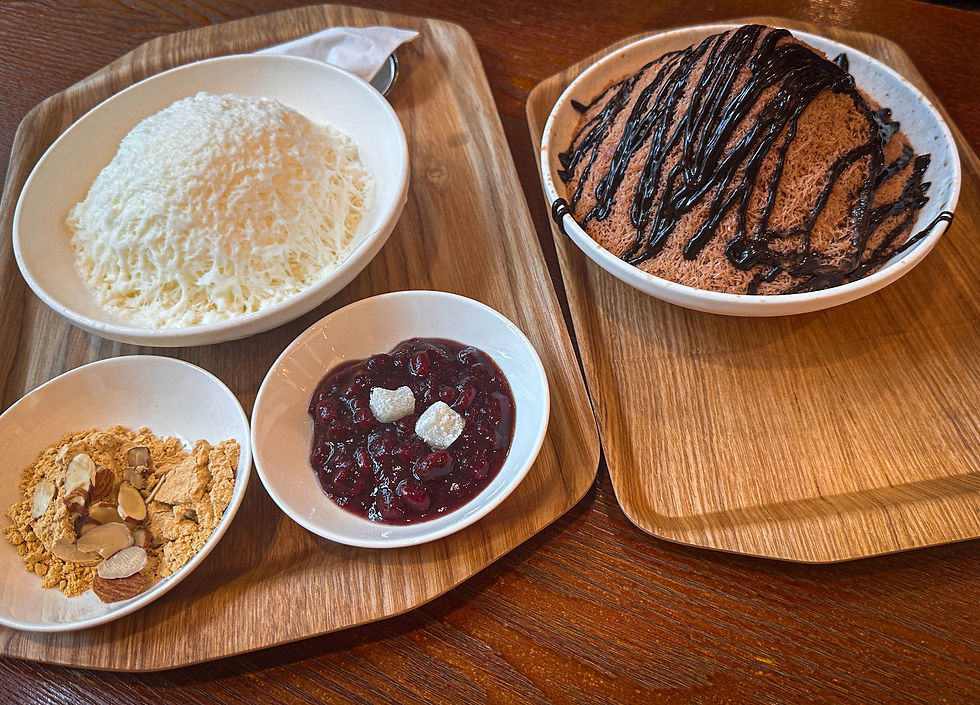
Snacks and Grocery Items: Surprise Flavors Hitting the Shelves
Small convenience stores like 7-Eleven, GS25, and CU, open 24/7, are essentially fast food restaurants. You can buy instant ramen and prepare it right there with hot water. There's also gimbap (Korean sushi roll), onigiri, and sandwiches, and the prices are very reasonable: between 1,500 and 4,000 won.
I especially recommend you to try the banana milk.
In Korea, you'll find yourself in a world of delicious food, not only in restaurants but also in markets and convenience stores. From kimbap and ramen to snacks and drinks, everything is unique and worth trying.
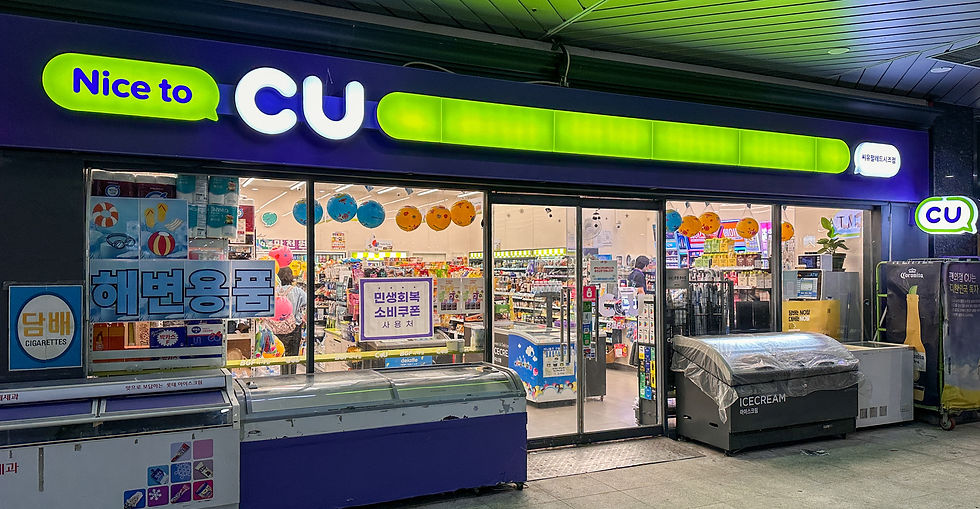
Kimbap (편의점 김밥) – Sold in triangles or rolls at convenience stores like CU, GS25, or 7-Eleven, ready-made kimbap is a lifesaver. It's cheap, portable, and comes in a wide variety: tuna, spicy meat, cheese, veggies… Perfect for a quick snack or a light meal. The best one is tuna and mayonnaise🤌
Instant Ramen (라면) – Korea's instant ramen variety is mind-boggling! There are hundreds of varieties, from spicy buldak ramen to cheesy versions. Some grocery stores even have ramen makers; you can grab your chosen package and cook it instantly.
Banana Milk (바나나 우유) – This iconic banana milk with its small yellow bottle is sweet and refreshing. It's a drink Koreans have enjoyed since childhood. If you see this at the market, don't miss it! It's delicious!
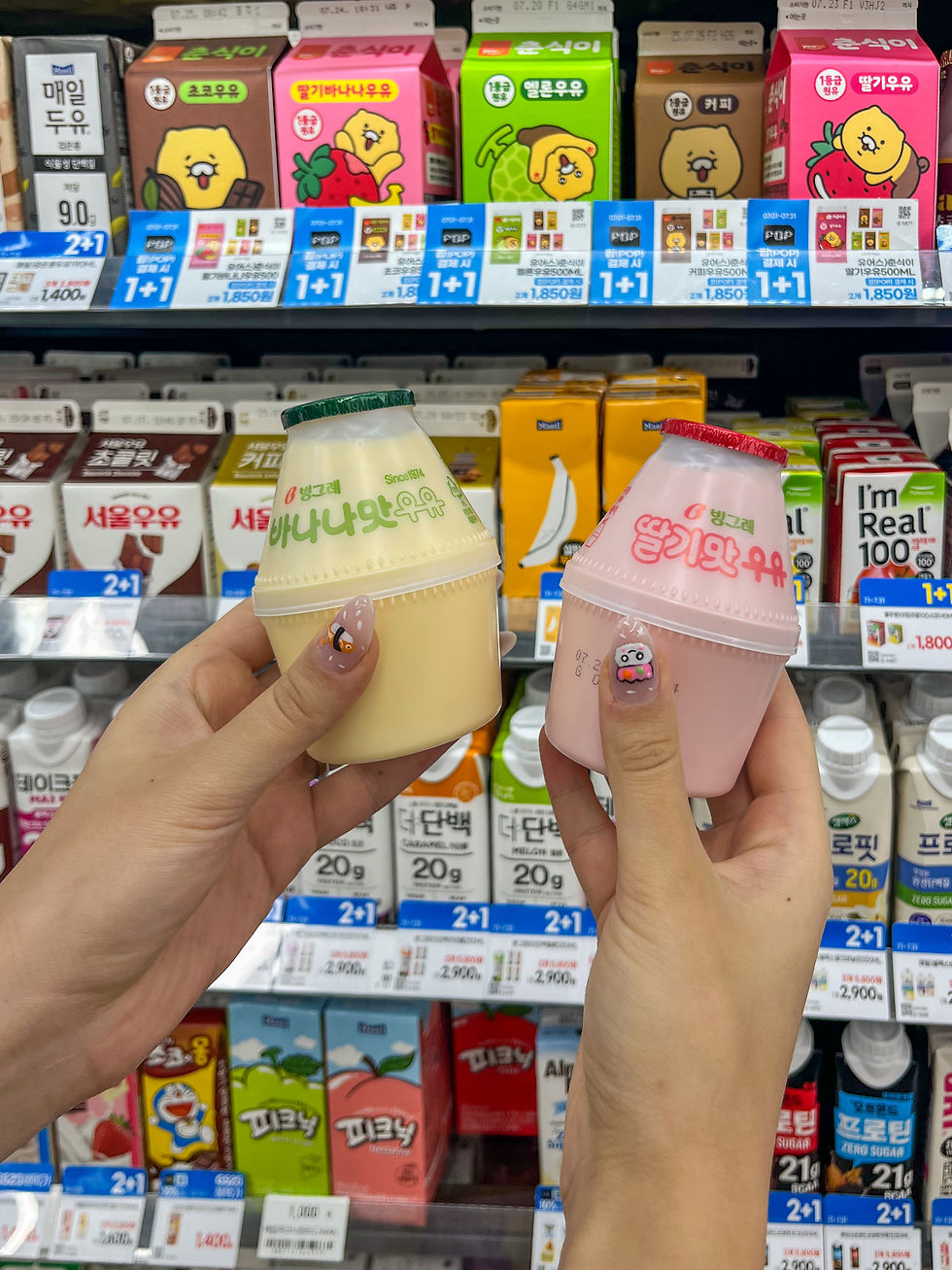
Beverage Culture: From Soju to Bubble Tea
Soju: Korea's Social Drink
You can't go to Korea without experiencing soju! It's a vodka-like spirit, but it's actually rice-based and much smoother than I expected. It's between 16-20% alcohol, stronger than beer but lighter than vodka. It comes in green bottles, small shot glasses, and very specific drinking etiquette. It can be found in supermarkets for between 1,500 and 3,000 won.
Bubble Tea and Trendy Drinks
Taiwanese bubble tea chains like Gong Cha and Koi Thé are very popular. But there are also Korean versions: corn tea, misugaru (multigrain) latte, sweet potato latte...
Notable drink trends on Instagram: Galaxy lattes (color-changing), creamy cloud drinks. Fresh fruit juice combinations are especially incredible in the summer.
Traditional Korean Drinks
Makgeolli : rice wine, slightly sweet, with a milky, cloudy appearance
Bokbunja : Raspberry wine, very sweet
Sujeonggwa : Cinnamon punch, a traditional dessert drink
Sikhye : A sweet, refreshing rice drink usually served during holidays or special occasions.
Korean Iced Coffees – Iced Americano, vanilla latte, or Dalgona coffee are very common in cafes. Dalgona Coffee has already spread worldwide from Korea!
Market Beverage Culture
Banana milk (Binggrae) is definitely a must-try! There are also varieties like strawberry milk and chocolate milk. It's a popular breakfast drink among Korean college students.
Drinking culture in Korea is very socially focused. It's not just about the power of alcohol; it's about community, respect, and shared experiences. Even coffee culture is a social activity!
☕ Seoul's Most Interesting Cafes & Sweet Stops
Cafe culture in Korea is anything but ordinary. Each one is like a concept show! The moment you step inside, you feel like you're in another universe. Some look like they've stepped out of a cartoon, others are like art galleries... And they all have one thing in common: Coffee + dessert = happiness!
If you're ready, let's visit the most interesting cafes in Seoul together. 📸
🖤 943 King's Cross (Harry Potter Café) – Hongdae
When you enter, you'll feel like you've been transported to the Harry Potter universe! If you'd like to put on your wizard cloak and experience the Hogwarts atmosphere in Seoul, you should definitely stop by.
✨ Inside there are wizarding classrooms, train station themed sections, and even wands.
📍 Location: Hongdae📷 It's impossible to leave without taking photos!
🖊️ Greem Café (2D Café) – Yeonnam-dong
A cafe that looks like it's drawn in black and white, where you'll feel like you're in a 2D cartoon. Even the chairs are cartoon-like!
☕ The interior is minimal but extremely sweet. The presentation of their coffees is also creative.
📍 Location: Yeonnam-dong (near Hongdae)
🧸 Thanks Nature Cafe – Hongdae
What if I told you that while you were sipping your coffee at the cafe, sheep were sitting at your table next to you? Yes, you can actually spend time with live sheep here.
🥞Their pancakes and lattes are very popular.
📍 Location: Hongdae
🐱 Cat Cafés / Dog Cafés
Cat and dog cafes, which can be found in almost every neighborhood in Seoul, are very popular. They're especially ideal for animal lovers.
📍 Recommended:
Bau House (Hapjeong) – For dog lovers
Cat Garden (Myeongdong) – Enjoy coffee with cats
🍰 Stylenanda Pink Pool Café – Myeongdong
Every shade of pink, the pool concept, the makeup studio atmosphere... It's a favorite of Instagram lovers.🎀 Their dessert presentations are elegant, their coffees are classic, but even the atmosphere is worth visiting.
📍 Inside the Stylenanda store in Myeongdong
🎠 Cafe Onion – Anguk
A modern touch to a traditional Korean home! A blend of ancient hanok architecture and a contemporary cafe.
🥐 Their baked goods are delicious; especially their onion croissants are very popular.
📍 Anguk (near Bukchon Hanok Village)
🎯 Tip:
You may have to wait in line at popular cafes, especially on weekends.
In some concept cafes, it is mandatory to buy a drink, but it is not allowed to enter or exit for photos :)
🖼️ Cafe Yeonnam-dong 239-20
The place that created the original concept of 2D Cafe. Similar to Greem Cafe, but a little calmer.
Address : Yeonnam-dong, Mapo-gu
💐 Arriate Flower Cafe – Myeongdong
A romantic cafe experience filled with flowers .
Refreshments : Colorful teas and sweets.
Address : 47 Myeongdong 8ga-gil, Jung-gu
📸 Anthracite Coffee – Hannam & Seongsu
One of Seoul's most "hipster" cafes . Located in a converted old factory.
Coffees : High-end brews, ideal for quality coffee lovers.
📍1059-3 BAGEL & COFFEE HOUSE- Seoul
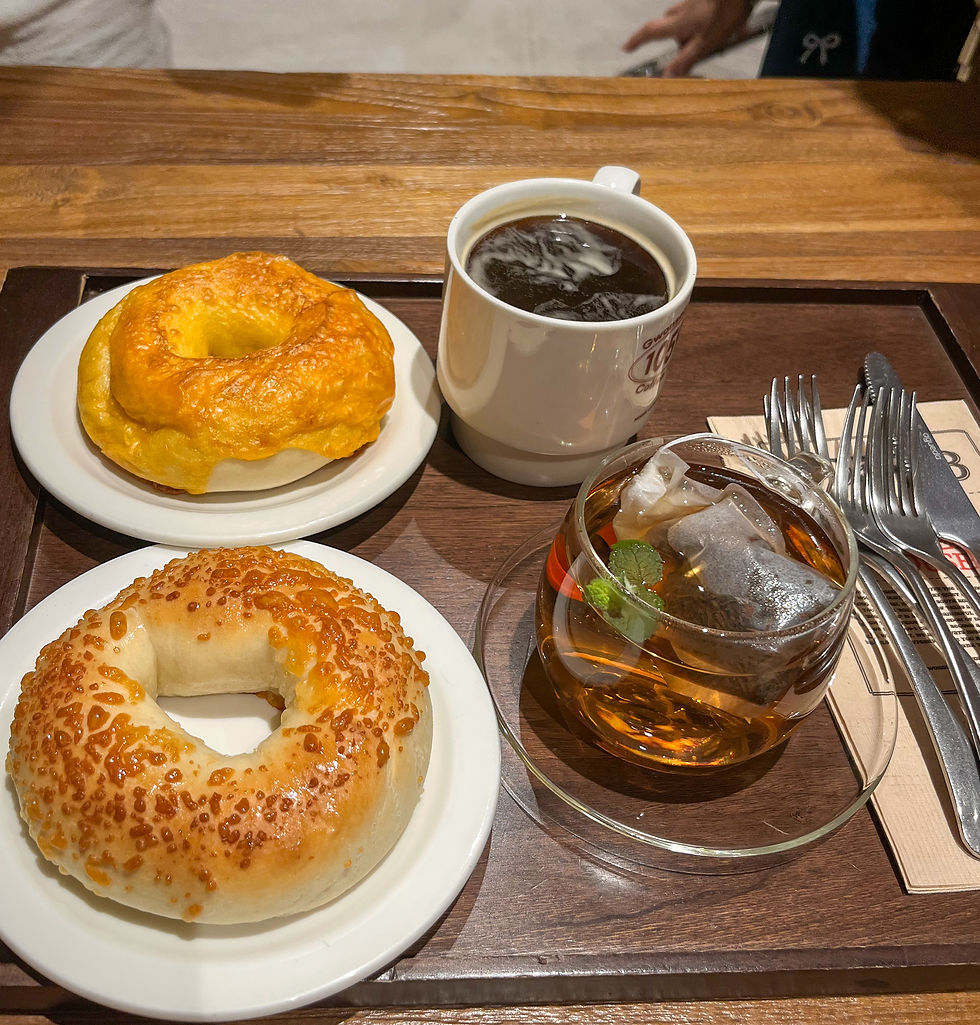
📍PAUL & Meal- Seoul
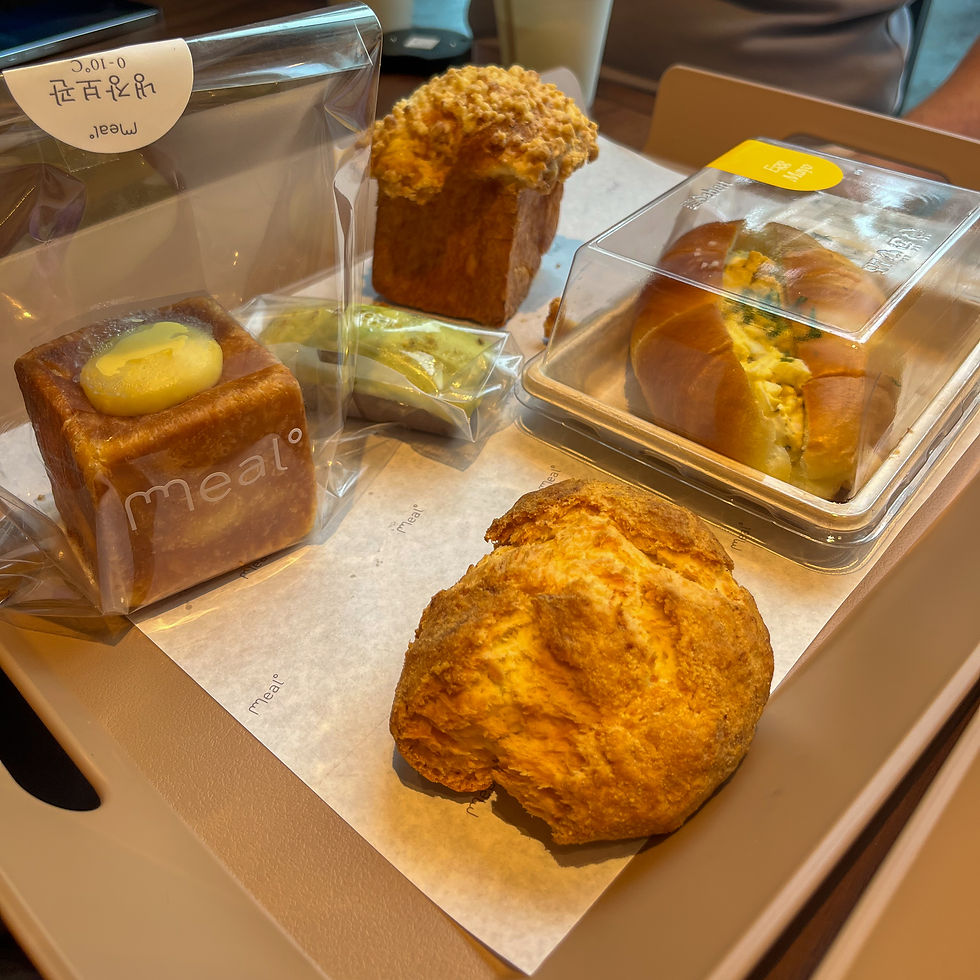
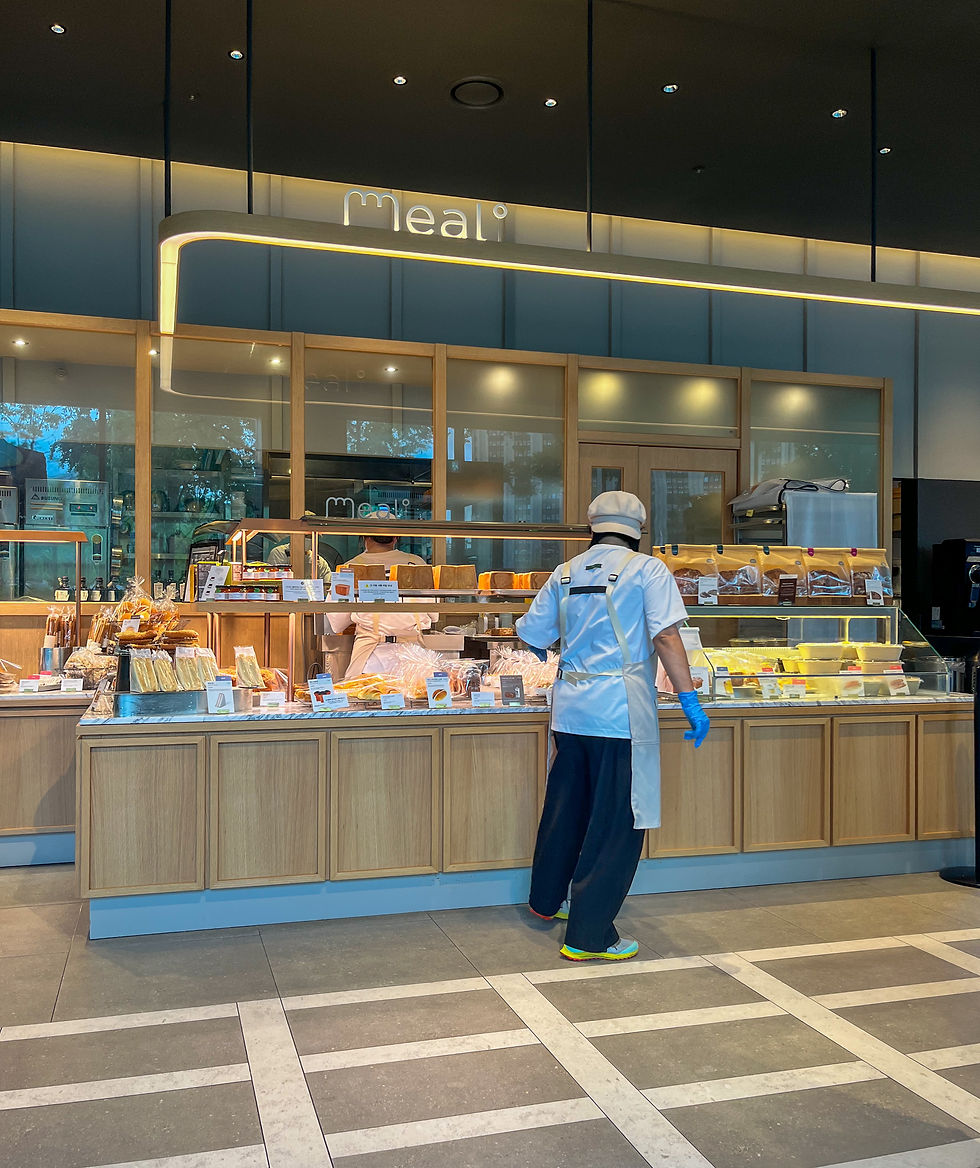
📍EGGDROP- Seoul
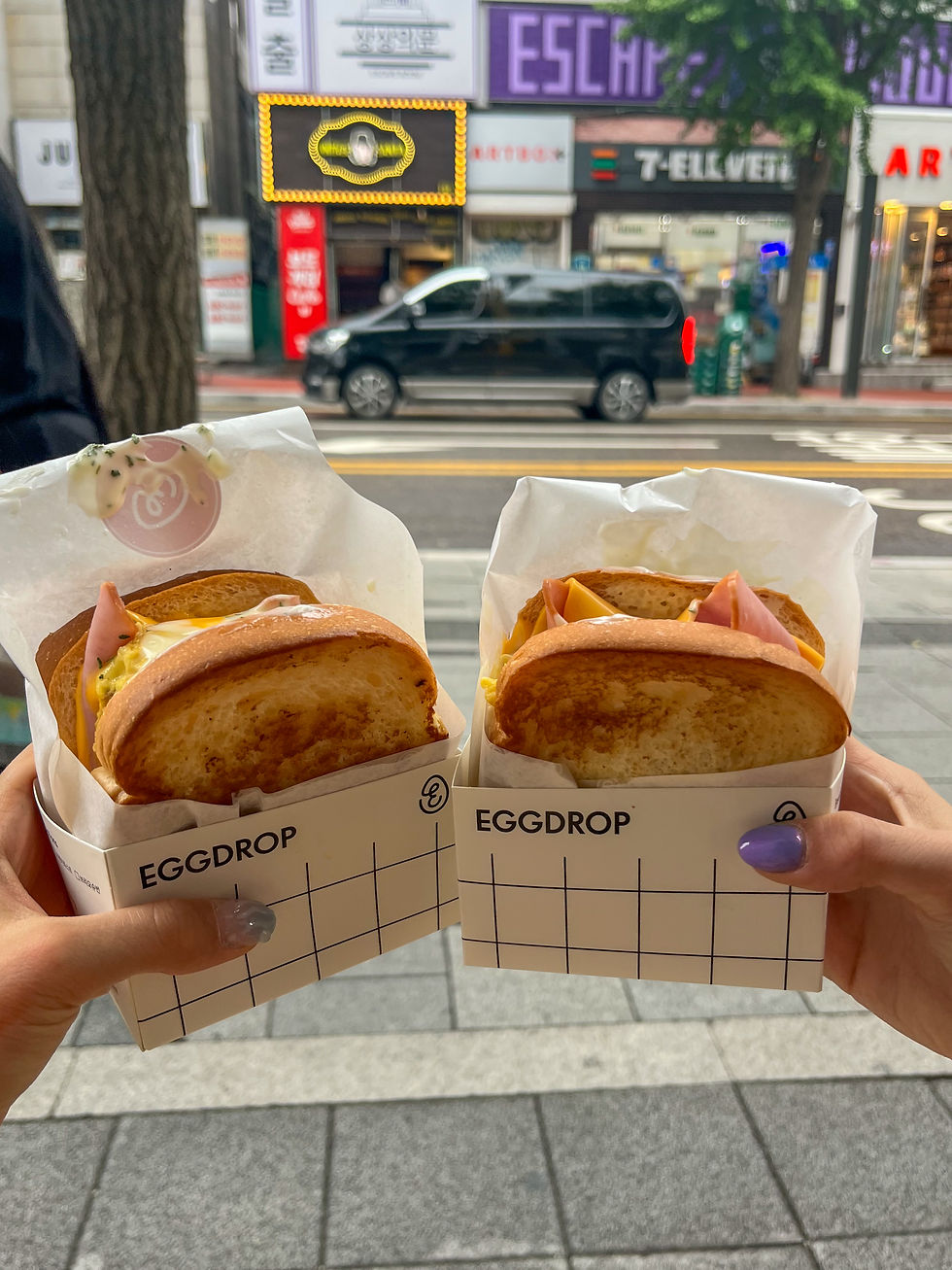
📍JAISO-Seoul
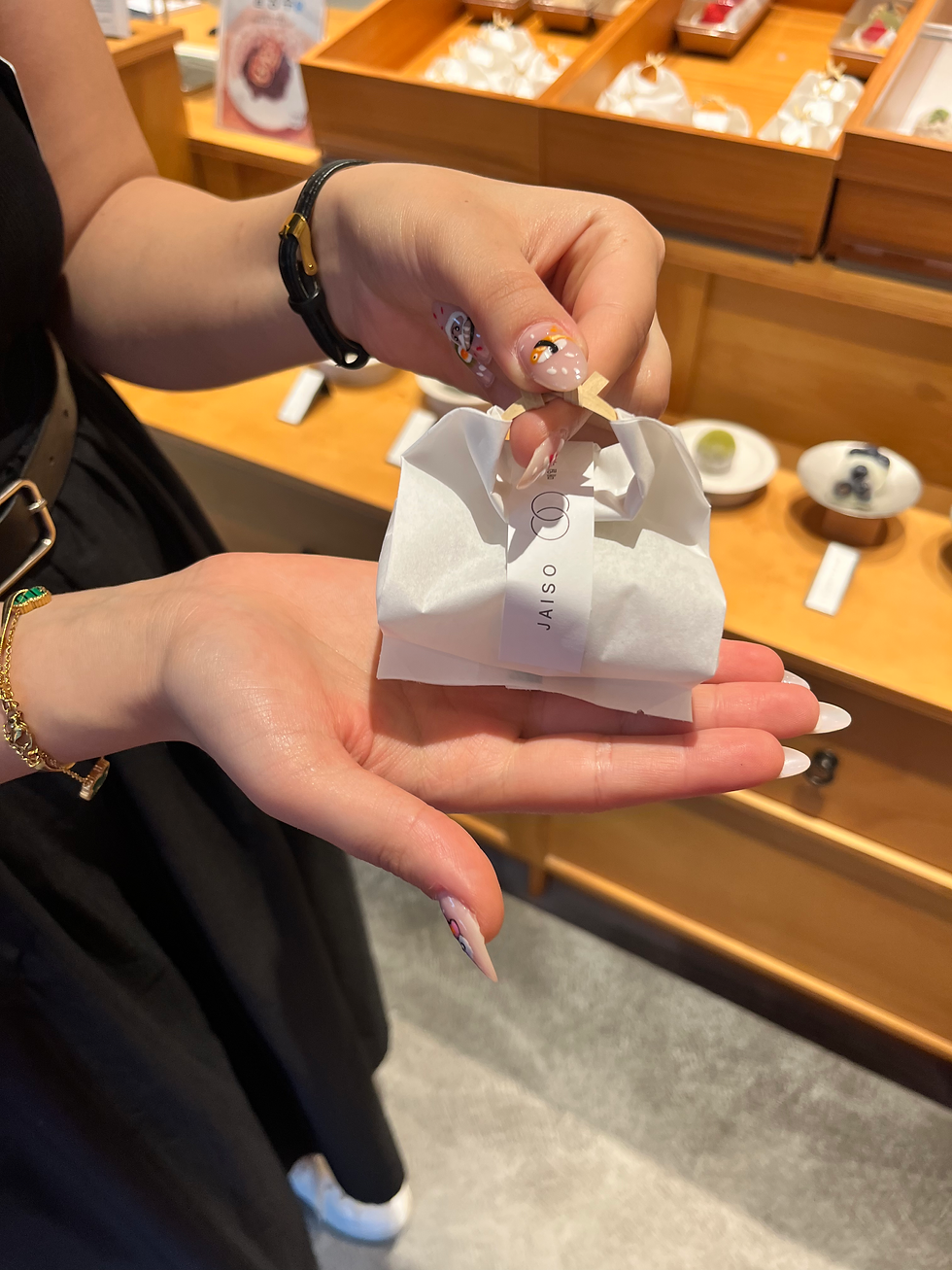
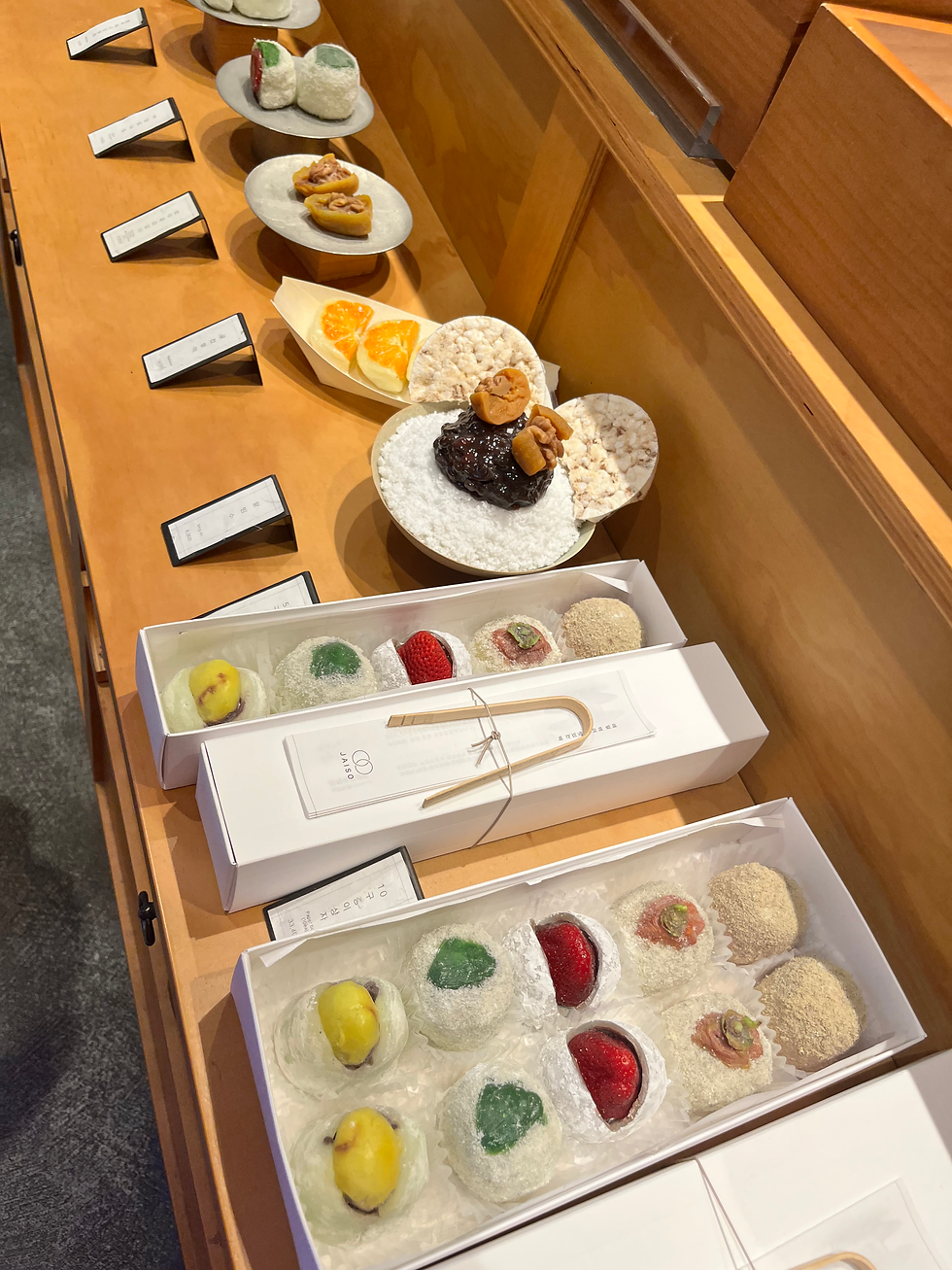
📍LUCIEN BAKERY-Busan
📍SSADA- Seoul
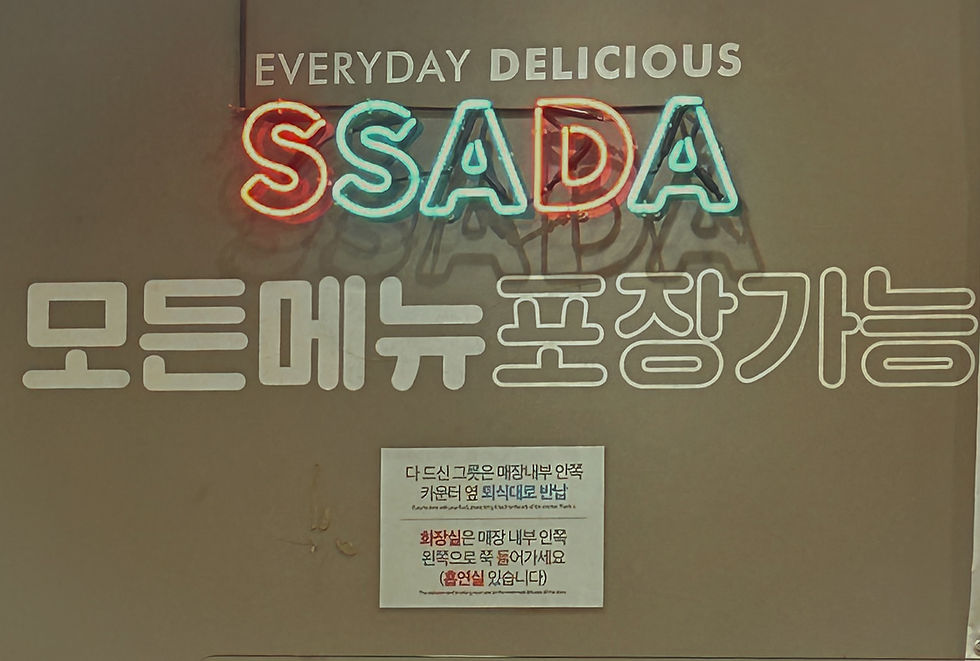

📍PLOP PIZZA- Busan
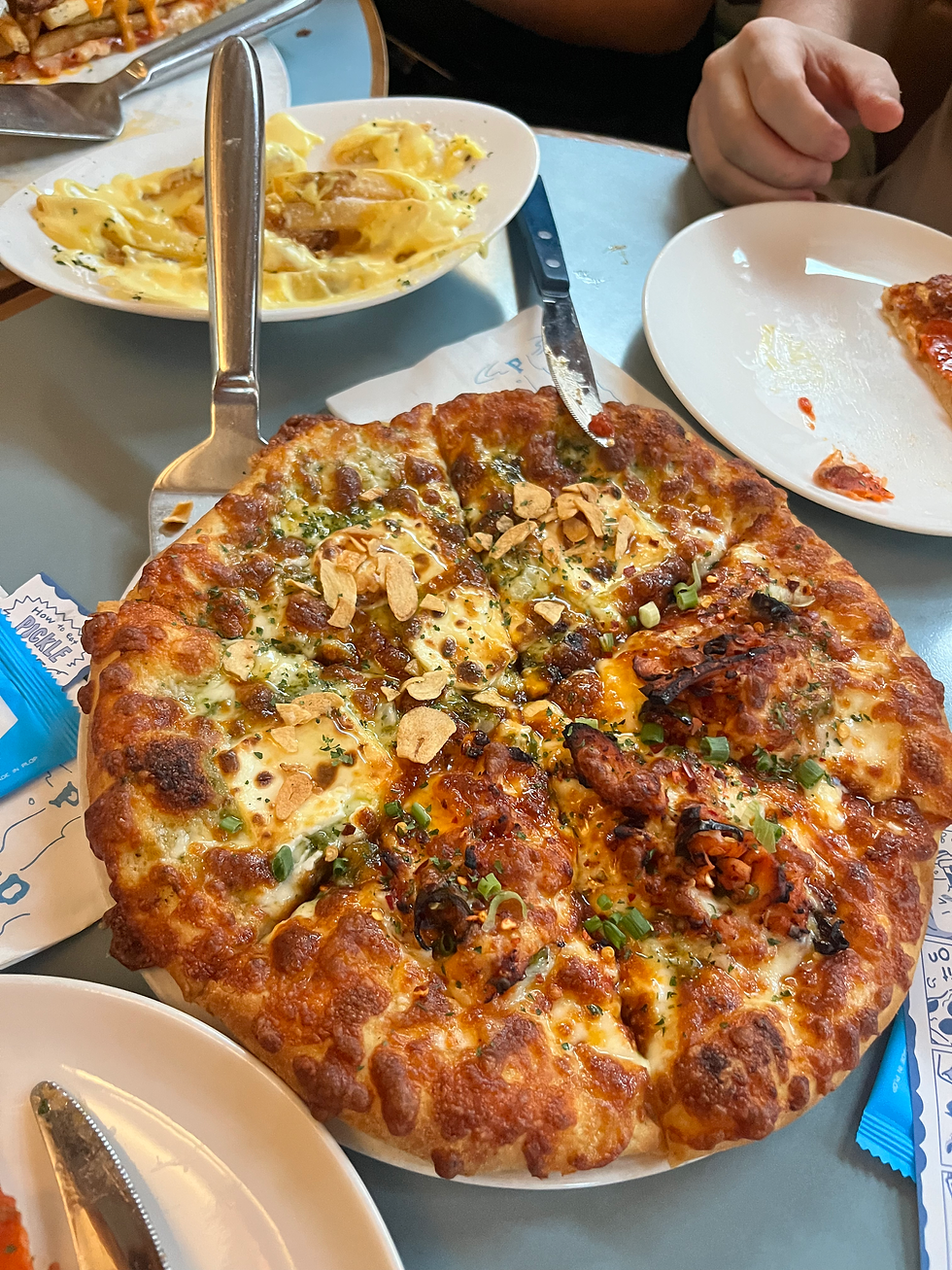
Small But Delicious Tips for First-Time Travelers
Keep an open mind: Korean cuisine may seem "different" to some at first, but once you try it, it becomes addictive. Give strong flavors like kimchi, in particular, a chance.
Explore the markets: Both practical and interesting flavors await you at chains like CU, GS25, and 7-Eleven. Don't forget to enjoy a mini Korean snack tasting in your room one evening!
Pay attention to the spice level: "Spicy" can mean seriously spicy in Korean. If you have a low tolerance for hot food, it's important to mention that when ordering.
Don't worry if everything looks like meat: If you look closely, there are plenty of vegetable-based dishes and side dishes.
Share a meal: In Korea, meals are often shared. You can discover even more flavors by trying small portions of different dishes.
“ Go-gi eop-seo-yo (고기 없어요) ” – It means “No meat”, which can be useful when ordering.
Carrying a translation card explaining whether you are vegetarian or vegan is especially helpful in smaller restaurants.
Restaurants labeled “vegan” are becoming more common in big cities like Seoul and Busan;
Practical Tips:
Price Ranges and Budget Planning
Street Food: 2,000 – 8,000 won
Restaurant: 8,000 – 15,000 won per person
Korean BBQ: 25,000 – 40,000 won
Premium Restaurants: 50,000 won and above
Market / Convenience Store Meals: 3,000 – 7,000 won
Food Markets You Must Try
Gwangjang Market : Seoul's most popular food market, selling traditional street food. So much so that they even dedicated an episode of Netflix's Street Food to it, you can watch it without going.


Mangwon Market
It is a bit smaller than Gwangjang Market in Seoul, but it is less touristy so it is quieter and focuses on seafood.

Gukje Market
If you have time to visit the food market in Busan, you can visit it.
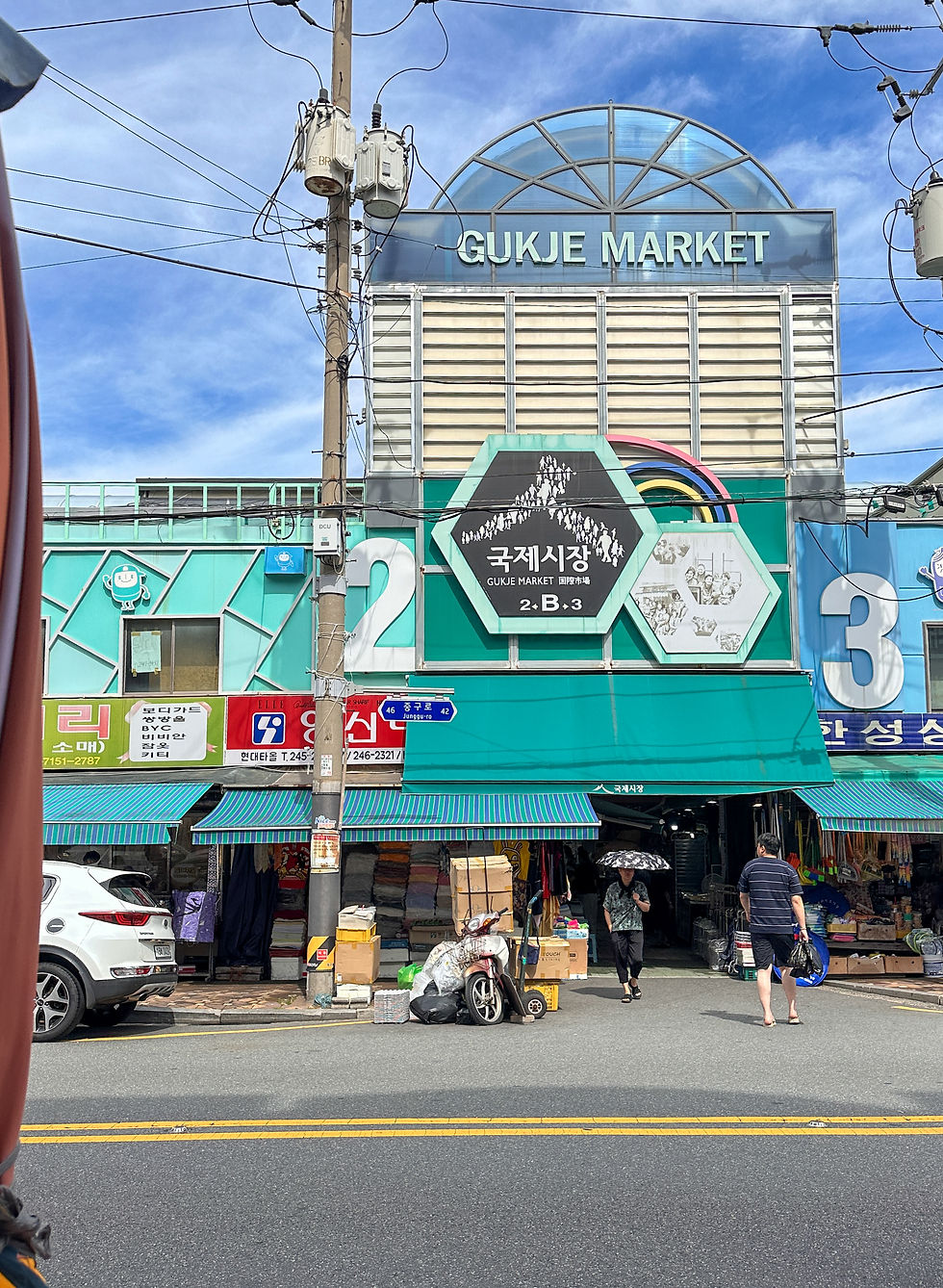
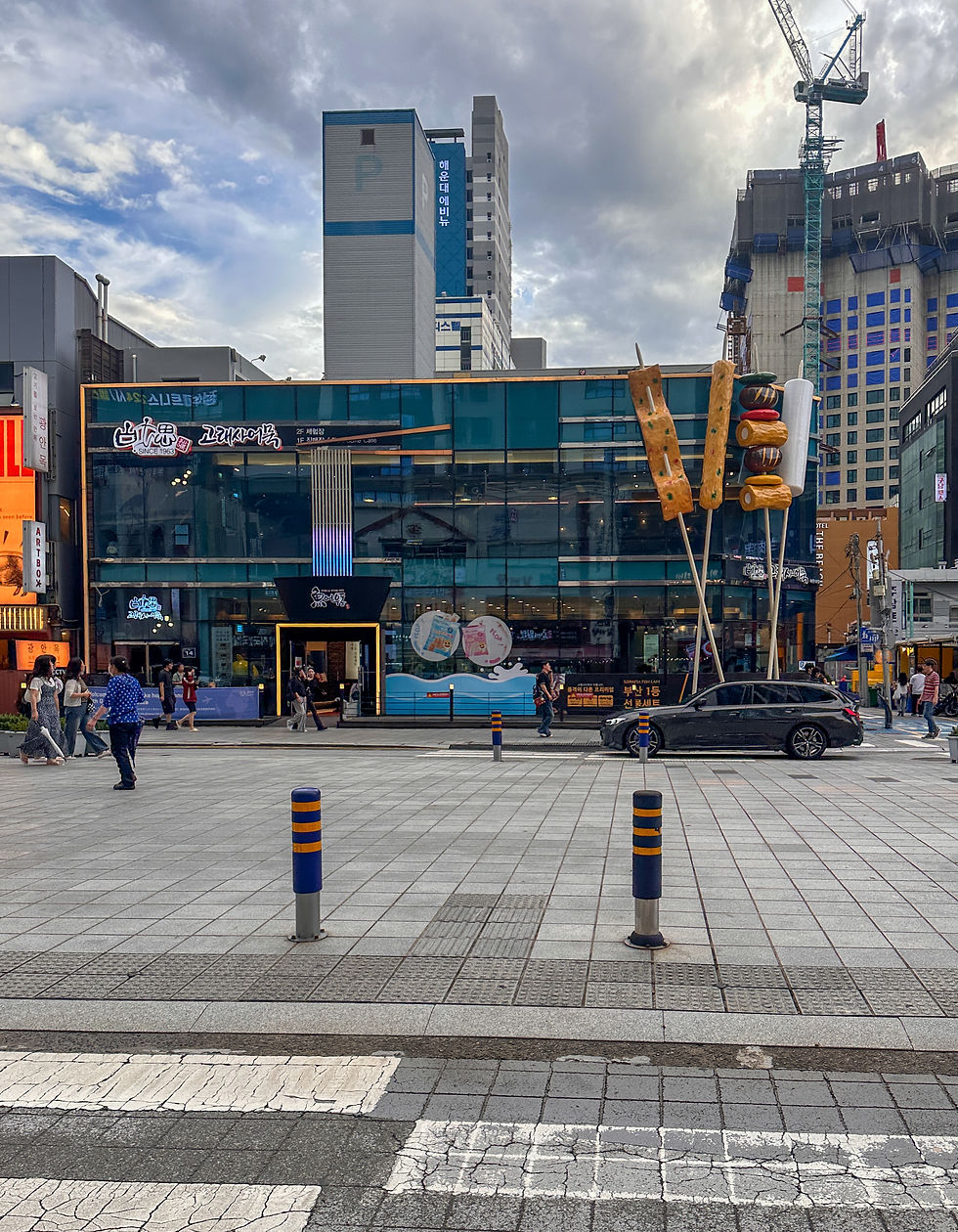
Korean cuisine doesn't just offer delicious dishes; it also reveals its culture, history, and lifestyle. While it might seem daunting at first, you'll taste the country's essence with every bite. If you ever find yourself in Korea, don't just explore the sights; explore the fragrant aromas wafting through the streets. Because true discovery begins with your palate. This culinary journey was unforgettable for me, and I hope it will be for you too. Enjoy the experience!






Comments